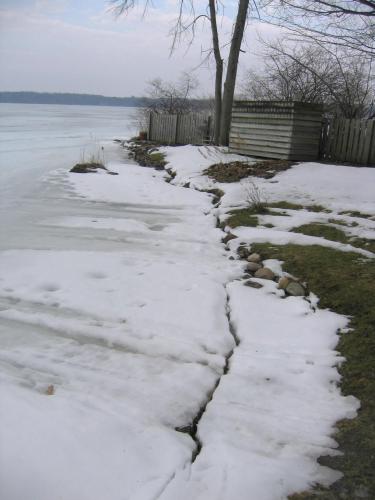Ice cover on inland lakes – good or bad?
Boaters want less, ice fishermen want more. But what about the lake?
The duration of ice cover on Michigan inland lakes varies from year to year and lake to lake and even from bay to bay on some lakes. Ice fishermen wait anxiously throughout the fall and sometimes it seems to be halfway into the winter for enough ice on which to safely fish. Boaters eagerly anticipate that first warm day and getting their crafts back on the water. But what about the lake? Does the duration of ice cover matter to the lake ecosystem?

Ice cover on Gull Lake, Kalamazoo County
Analyses of long-term ice cover data for temperate latitude inland lakes indicate a decreasing trend in the average number of annual ice cover days. This trend is generally associated with climate change. With fewer days of ice cover, lake water warms more quickly in the spring and thermal stratification of the lake starts earlier and persists longer.
Although most Michigan lakes naturally stratify during the warmer months, prolonged stratification can lead to conditions that favor certain aquatic organisms. For example, some forms of blue-green algae (some of which are toxic) are able to control their own buoyancy – allowing them to migrate vertically across thermal layers to utilize available nutrients. In this way, they may out compete the beneficial green algae and other microscopic organisms which form the base of the lake’s food chain.
Conversely, prolonged ice cover accompanied by deep snow reduces the light penetration which drives photosynthesis in aquatic plants. This can result in dangerously low dissolved oxygen concentrations under the ice and lead to winter fish kills.
Better understanding how lakes work can help ice fishermen, boaters and other lake users be better attuned to climate change predictions and possible effects on inland lake ecosystems. Michigan State University Extension offers programs and resources on lake and shoreline management, including the upcoming Lake and Stream Leaders Institute.



 Print
Print Email
Email

